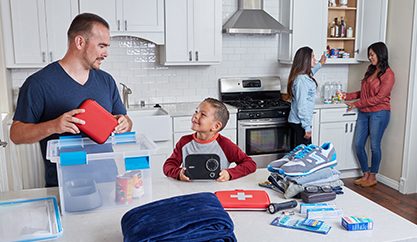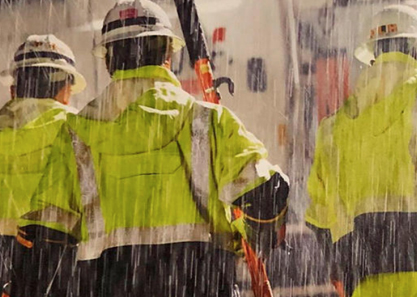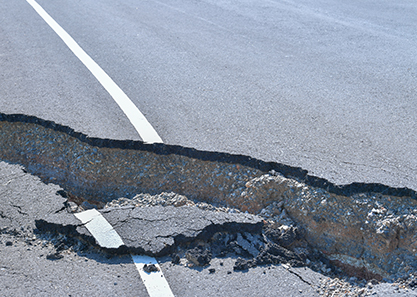Do we have your current contact information? Help us reach you in an emergency by updating your information in My Energy Center.
Emergency Preparedness
Emergencies can happen at any time and you are the first and best defense for helping yourself and your loved ones. There’s no better time to prepare for an emergency than right now. Every family is different, but we’ve put together tips and resources to help you plan and stay safe, no matter the emergency.

Develop an evacuation plan
Emergencies can come in many forms such as wildfires, storms, earthquakes or school or work emergencies. Being prepared for emergencies means having a written plan as well as supplies.
Your plan should be tailored to meet your specific situation, such as preparing for elderly and disabled family members as well as pets. Review and update it as often as needed.
Consider these things when making a plan:
- Create an emergency plan for your family, identifying two places for the family to meet.
- A place outside your home
- A spot away from your neighborhood in case you can't return home
- Practice the plan with your family, including your children.
- Review the emergency plans at your workplace, your children's school or daycare center and other places where members of your family regularly spend time away from home.
- Plan safe routes away from your home and business to high, safe ground. Make sure your children are aware of the routes away from home.
- Develop a plan for family pets and livestock; evacuation shelters may not allow animals.
- Designate a friend outside the area who family members can call if separated.
- Keep current important documents in a safe-deposit box.
Don't forget! Your evacuation plan should be practiced routinely to ensure everyone knows what to do.
Planning ahead for seniors and people with disabilities
If you or a loved one in your household has specific mobility, hearing, learning, seeing or mobility needs, and/or require certain medical devices due to a medical condition, consider any relevant items you need to add to your kit, such as:
- Medications
- Prescriptions
- Important documents, physician contact
- Extra batteries for hearing aids and other medical equipment
- Backup oxygen
- Assistive devices
For evacuation, familiarize yourself with your house or building complex. Practice using each of the possible evacuation routes and check for obstacles or other impediments that may be present such as debris, flooding, loss of electricity or smoke. Call 911 for emergency evacuation assistance.

Pets and Service Animals
In an emergency, any animals in your care are dependent on you for their safety. It’s important to take pets and service animals with you. If you can’t get home to look after your pets, have a backup caregiver you trust and give them a key. Make sure that cats and dogs are wearing collars and identification tags that are up to date. Put your cell phone number on your pet's tag as well as the phone
number of a friend or relative in case you can’t be reached on your phone.
Include supplies for your pet in your emergency kit. Depending on your pet, useful items might include:
- Leashes, harnesses and/or carriers to transport pets safely.
- Food, drinking water, bowls, cat litter/pan and a manual can opener if your pet eats canned food.
- Medications and copies of medical records.
- Current photos of you with your pet(s) in case they get lost.
- Information on feeding schedules, medical conditions, behavior problems, and the name and number of your veterinarian in case you have to foster or board your pets.
- Pet beds and toys, if easily transportable.
You can always speak with your veterinarian about items to include in your kit. Remember to make plans for all the animals in your care, including any horses and farm animals.
Easily print and check off
Download a printable version of our emergency kit checklist, as well as resources to help you plan in advance.



